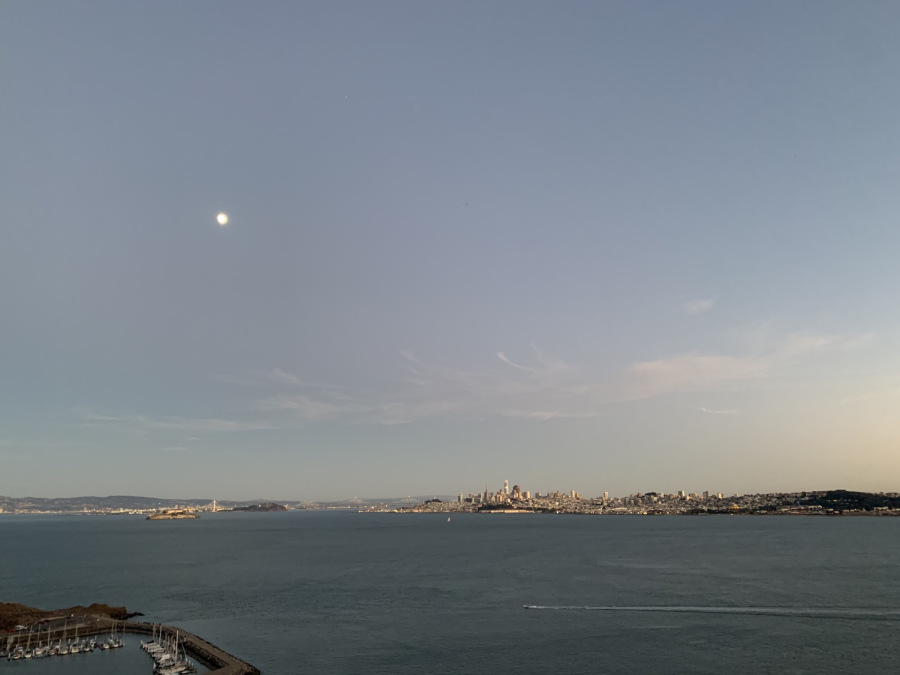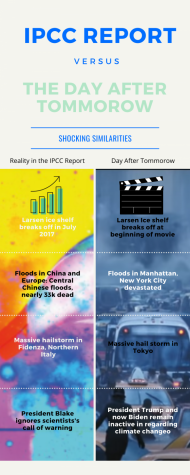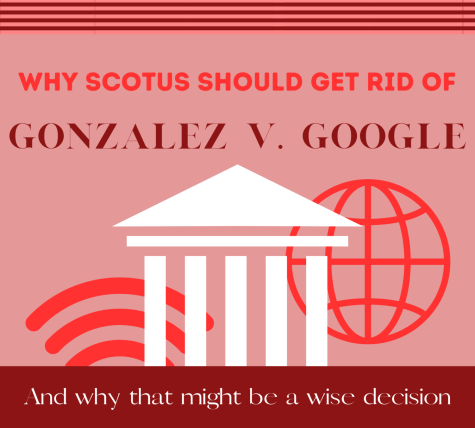Pop Culture and Climate Change: How older movies are still relevant today
San Francisco, pictured above, will be covered with ice, resulting in it being uninhabitable if the scientific phenomena from the movie come to fruition. What will humanity do to prevent it?
September 29, 2021
It’s said that fiction is based on reality. However, reality can be even more shocking than fiction.
Nothing has made this more imminent than the release of the new report from IPCC (Intergovernmental Panel on Climate Changes).
Climate change has always been a pressing issue since the 1900s.
This has never been more salient than now. With the release of the new IPCC report on climate change, shocking parallels tie to the 2004 movie The Day After Tomorrow.
What the IPCC Report says
The IPCC report is full of technical and professional jargon, but the general gist sums up the devastating effects of climate change. Rising ocean levels, increasing CO2 emissions, and other phenomena have real and observable impacts such as wildfires in California, Greece, and Turkey, floods in Northwestern Europe and China, and heatwaves in frozen regions like Siberia and Canada.
“Climate change is a huge problem. Not a lot of people think about it, but it’s subtly and slowly changing year by year,” says Bani Kaur(‘22), president of the Amador Ocean Conservancy Club.
Furthermore, the North Atlantic Current, one of the most influential currents that control weather phenomena over the entire world, has been changing in response to rising ocean levels due to global warming.
There are several shocking implications of this.
How Day After Tomorrow (2004) parallels global issues
What’s shocking is the parallel between this almost 20-year-old movie, the Day after Tomorrow, and the IPCC Report. A highly scientific, data-based report created by professional scientists in 2021 parallels a blockbuster movie produced in 2004 and raises questions about what humanity accomplished in 17 years and how humanity will move forward.
The Day after Tomorrow is a movie directed by Roland Emmerich. Based on a 1999 science theory nonfiction book by the name of The Coming Global Superstorm written by Art Bell, it outlines the possibilities of the changing of major sea currents such as the North Atlantic and Gulf Stream currents changing or disappearing altogether.
The book goes in-depth about the scientific basis for what will be essentially a second ice age, while the movie makes more of a social statement on climate change.
The main protagonist, Jack Hall, played by Dennis Quaid, starts the film by investigating ice samples off the coast of Norway. The ice there breaks off and breaks away into the ocean, causing a doomsday scenario as the entire Earth starts to experience behemoth storms and blizzards, as well as tornados and hail.
Dystopian scenes of Los Angeles, Manhattan, Tokyo, Canada, and other regions inspire awe and fear at the power of nature and the destruction of climate change. As Jack Hall attempts to warn the Vice President of the incoming destruction, he is largely ignored.
When fiction becomes reality
Here is what’s actually happening in the world right now. The Larsen Ice Shelf, the very same ice shelf that Jack Hall is digging at the beginning of the movie, has broken off.
The aforementioned freak weather phenomena are occurring all over the world, with floods in Asia and Europe, fires in the US and Australia, and hurricanes and tornadoes striking with greater intensity and destruction.
All the while, the leaders of many countries and political entities are turning a blind eye to the urgent warnings of scientists and activists, exactly like in the movie.
Such parallelism of popular culture and science is scary to students and the younger generation. Climate change may not seem like a pressing topic now, yet it has truly global consequences.
“It showed me how climate change is a very needy situation that we need to take care of so that the day after tomorrow is alright. We should do everything that we do to stop climate change, even if no one does it. Even if no one else does, you should do it yourself,” said Weiting Yen (‘23).
What are the solutions?
Acting now is extremely important to prevent the events of the movie from happening in real life. The nightmare of the movie may become reality according to the report.
Rising sea levels affect not only coastal areas but the entire world. Humanity has truly influenced nature and the ocean to cross boundaries it has never before. This means that if humanity does not act fast, the entire world will be changed geographically, altering modern society.
“What we need to do is to reduce our carbon intake and footprint. We can do recycling, not drive a car to school, and pay attention to the food that we eat. Beef and chicken have a much heavier carbon footprint than vegetables would take, and buy whatever you eat to conserve energy by not having leftovers”, says Kaur.
Pop Culture and global issues
Although Day After Tomorrow is a scientifically based movie that highlights the need for action against climate change, this doesn’t necessarily mean that all movies are real and based on truth.
Many popular movies have been taken the wrong way. An example of such is I Am Legend, a dystopian film on a world full of vampires as a result of contaminated vaccines. Anti-vaxxers hold up the film as a staple of truth to support their faith, despite countless scientists, professionals, and even the creator of the story himself denying such an interpretation.
“I think I’m concerned about climate change as a citizen of the world, not just because I am a science teacher. I think it’s a topic of concern for all of us and I’m glad that pop culture is addressing the issue because it’s bringing it to the forefront of our minds and it really shows the importance of the issue at hand and that the younger generation really has the power to make impactful changes and help to curb climate change,” says Biology teacher Cora Da Costa Pereira.
At the end of the day, no matter how many reports or movies about the changing climate are published warning of its dangers, it’s up to humanity to save itself and more importantly, the Earth from destruction at their own hands. Will the future be buried under ice and fire, or will we be able to make sure that the day after tomorrow is livable?
















